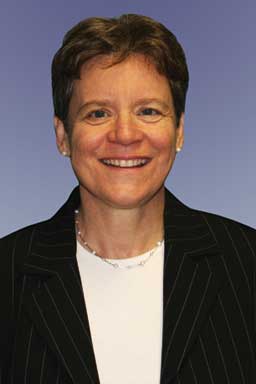From the Executive Editor: Positive pre-veterinary experience builds interest in swine veterinary work
A very successful, structured pre-veterinary experience was piloted at the Ontario Veterinary College thanks to funding from the AASV Foundation and the initiative, drive, and direction of Karen Richardson. The purpose of the project was to provide an experiential learning opportunity for pre-veterinary students to encourage them to consider a career in swine-health management. Undergraduate students, often with no previous food-animal experience, ask to volunteer with the swine research team before they apply to veterinary college. Many of these students do this to broaden their species experience, but do not honestly have a real interest in food-animal veterinary medicine. People who have pig-specific extra-curricular experience are more likely to choose to be swine veterinarians than those with no such experience. For several years, we have provided these volunteer opportunities for pre-veterinary University of Guelph students by involving them in on-farm data collection for research projects. This initiative provided an experiential learning opportunity with specific learning and outcome measures.
Selection of students. Pre-veterinary students registered as swine volunteers were invited to apply to participate in the program. They were told they had to complete all components of the experience. The 12 students accepted to the program (nine women and three men) were enrolled in Biological Sciences, Animal Science, Animal Biology, and Bachelor of Science and had completed their degrees (two) or were in second year (two), third year (four), or fourth year (four) of their programs.
Initiation of the program. The program began and ended with short tests to gather information about knowledge and experience. The initial in-class session was used to describe the program and gather insurance forms. The didactic portion covered basic terms of swine management and an exercise to understand normal pig behavior and clinical appearance.
Four farm visits. Each farm visit focused on a different phase of pig production and gave the students an opportunity for hands-on experiences. In the breeding barn, students discussed signs of estrus and observed natural breeding, semen collection, and processing. Each student performed an ultrasound pregnancy examination on four sows and read and interpreted sow cards. In the farrowing barn, students assisted with a dystocia and tested lungs from a stillborn pig to determine whether the lungs floated. They also processed piglets by cutting teeth and tails and administering iron. Some students castrated pigs. In the nursery and finisher barns, students observed pens of pigs to identify environmental issues (eg, water bowl contaminated with manure) and clinical pig problems (eg, pigs that were small for their age or that had umbilical hernias). Students worked in pairs to vaccinate a room of nursery pigs. In the finisher barn, students collected saliva and fecal samples from the pigs, snared pigs, and moved pigs onto a scale using a pig board. They used the pigs’ weights to discuss average daily gain.
Quizzes. Students were given printed handouts summarizing the material covered in the sessions. As students traveled to the farm, they completed a quiz that evaluated the knowledge gained in the previous session. The correct answers to the questions were discussed on the trip back from the farm. On the final day, students were given a final quiz that was cumulative for both knowledge and experience. The average grades for knowledge and experience in the initial quiz were 20% and 18%, respectively. In the final quiz, the average grades increased to 91% and 92%. The averages on the in-course quizzes were above 80%, except the one focused on the breeding area, which was 70%.
Journal club. One article was assigned for each of the four sessions: three Journal of Swine Health and Production articles and one proceedings article. After reading the assigned article, each student wrote one question about the case and one question about being a swine veterinarian. One author of each article was invited to respond to the students’ questions. These authors included Drs Jeremy Pittman (by Skype), Janet Alsop, and Bob Friendship, and myself. The goal of this exercise was to expose the students to the published articles and to meet the veterinary mentors.
Challenges of the program. It was difficult to find times when the students could leave campus to complete the farm visits. Karen did many visits on Saturdays to accommodate the students’ schedules.
Final evaluation. By every account, the program was a phenomenal success. The students gained knowledge, experience, and enthusiasm for swine veterinary medicine. Specifically, the students said that the program “increased their interest and appreciation” of the swine industry; opened eyes to opportunities/roles available; recognized that swine veterinarians have “good hours” compared to those in other fields of veterinary medicine; proved that they “enjoyed the population aspect of swine medicine” and that the program “made me consider going into food-animal medicine.” The students had contact with eight swine veterinarians, two technicians, a swine nutritionist, and a producer.
Students suggested that to encourage others to enter swine medicine we should run the program again. It was a rare opportunity to apply the knowledge learned in the classroom and to meet producers and swine veterinarians. One student wrote “This program has been very valuable in educating me about the swine industry and influencing me to consider pursuing a career in swine medicine! It was wonderful learning all aspects of the industry and to follow the pigs throughout their life cycle. Thank you so much for allowing me the opportunity to gain so much knowledge and experience from this program.” Thank you to the AASV Foundation for the financial support to complete the project. Valuable student experiences such as this deserve ongoing funding to enable a permanent opportunity for pre-veterinary students. We hope that a source of funding can be identified.
— Cate Dewey, DVM, MSc, PhD
